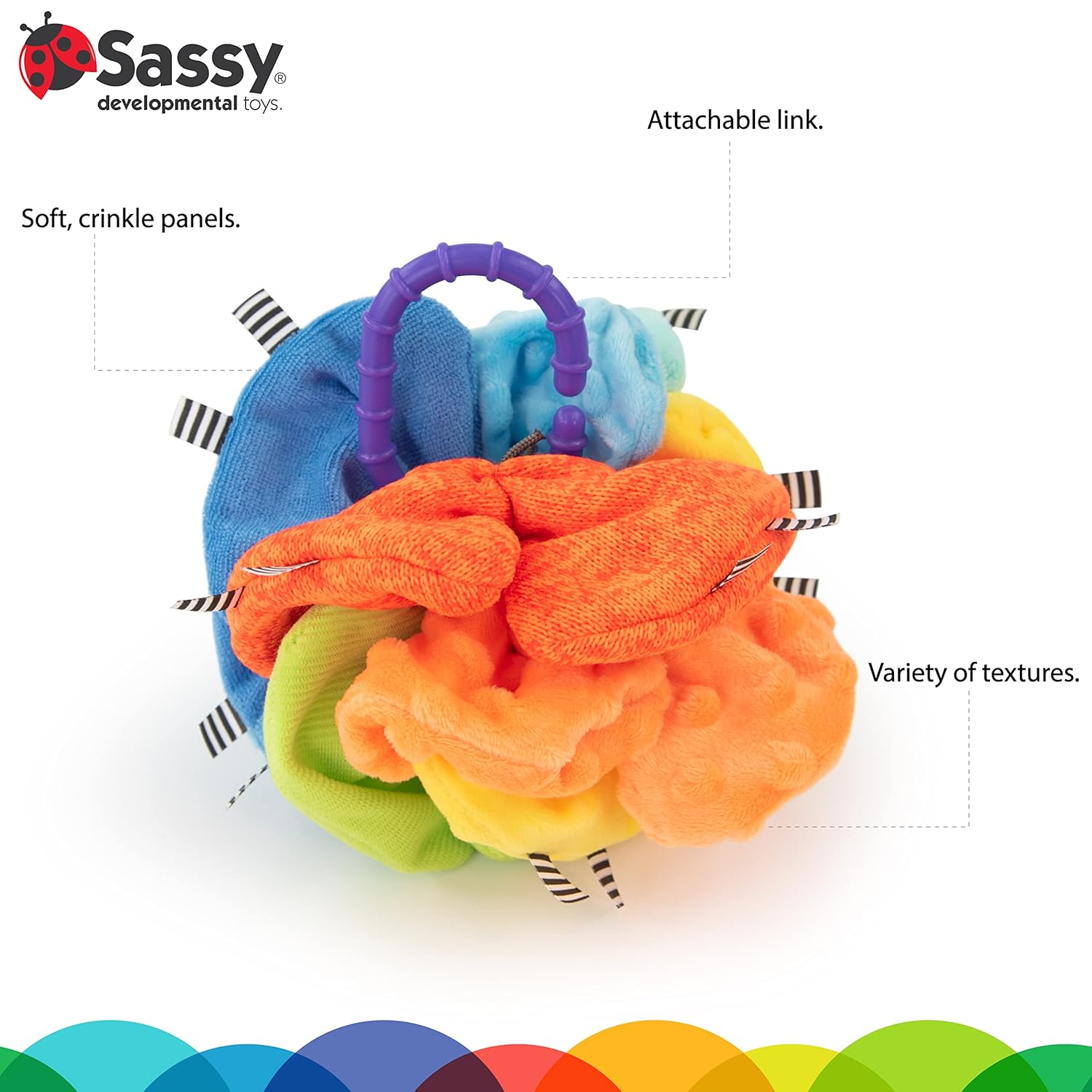



Exploring the World of Sensory Play: The Rainbow Crinkle Ball Experience for Babies
As parents or caregivers, understanding the importance of sensory play is crucial in fostering a child’s development. One product that enhances this experience is the Rainbow Crinkle Ball. This delightful toy not only captivates babies with its vibrant colors but also encourages sensory exploration through various textures and sounds. In this article, we will delve into what makes the Rainbow Crinkle Ball an essential item for your baby’s playtime, including its design features, how it influences development, and practical tips for incorporating sensory play into daily routines.
What Makes the Rainbow Crinkle Ball Special?
Vibrant Colors and Textures
The Rainbow Crinkle Ball boasts a spectrum of bold colors that attract babies’ attention. High-contrast colors, such as red, blue, yellow, and green, are not just visually stimulating; they play a significant role in developing a baby’s vision. These colors help create a stimulating environment that promotes tracking and focus.
Crinkle Sound for Engagement
Every parent knows that babies are fascinated with sounds, and the crinkle feature of this ball offers auditory stimulation. The crinkly noise draws a baby’s attention, encouraging them to explore further. This sound provides a cause-and-effect learning experience as babies realize that their actions produce delightful sounds.
Tactile Variety: Textured Fabrics and Ribbons
Each panel of the Rainbow Crinkle Ball consists of textured fabrics that provide different sensory experiences. The contrasting black and white striped ribbons add even more tactile variety, allowing babies to engage their sense of touch. The combination of various surfaces nurtures their developing sensory pathways.
How Does Sensory Play Benefit Babies?
Cognitive Development
Engaging in sensory play aids in cognitive growth. The exploration of textures, sounds, and colors stimulates brain pathways, promoting problem-solving skills and creativity. Babies learn about their surroundings, which is essential for their development.
Improving Motor Skills
The act of reaching for, grasping, and manipulating the Rainbow Crinkle Ball enhances a baby’s fine motor skills. As they learn to hold and shake the ball, they develop hand-eye coordination.
Emotional Growth
Sensory play, like that offered by the Rainbow Crinkle Ball, can improve emotional development as well. The engaging nature of the toy helps babies learn to express their feelings through play. It also promotes self-soothing as they interact with a familiar object.
Practical Uses of the Rainbow Crinkle Ball
On-the-Go Fun
The design of the Rainbow Crinkle Ball includes a textured link, making it easy to attach to strollers or diaper bags. This feature allows caregivers to ensure that sensory play is readily available—whether at home or on the go.
Incorporating Sensory Play into Daily Life
Integrating sensory play into daily routines is key to maximizing its benefits. Here are a few tips:
- Interactive Play: Engage with your baby while they play with the Rainbow Crinkle Ball. Make sounds, use playful expressions, and encourage them to shake the ball.
- Exploring Other Senses: Pair this toy with other sensory experiences, like soft fabrics or gentle sounds, to create a more enriching environment.
- Routine Exploration: Use the Rainbow Crinkle Ball during tummy time or while sitting up. This interaction not only encourages physical growth but enhances the overall sensory experience.
Pros and Cons of the Rainbow Crinkle Ball
Pros:
- Encourages sensory development.
- Promotes motor skills and hand-eye coordination.
- High-contrast colors aid in visual development.
- Easy to transport and attach for on-the-go play.
- Durable, safe materials suitable for young infants.
Cons:
- Limited use for older children.
- Potential for wear and tear over time.
- May require supervision to prevent loss or damage.
How to Choose the Right Sensory Toys for Your Baby?
When selecting sensory toys, consider the following criteria:
Safety First
Always check that toys are made from non-toxic, hypoallergenic materials, particularly for babies who explore with their mouths.
Age Appropriateness
Look for toys designed for your baby’s developmental stage. The Rainbow Crinkle Ball is perfect for infants but consider other options as they grow.
Variety of Sensory Features
Opt for toys that combine different textures, sounds, and colors. This variety fosters a rounded sensory experience and keeps your baby engaged.
Conclusion
Incorporating the Rainbow Crinkle Ball into your baby’s playtime routine can significantly enrich their sensory exploration. With its bold colors, engaging sounds, and tactile features, this toy not only entertains but also aids in cognitive, emotional, and physical development. Remember, engaging in sensory play is more than just fun; it’s a fundamental part of helping your child grow and learn through their early years.
FAQs
1. At what age can my baby start using the Rainbow Crinkle Ball?
Most experts recommend introducing sensory toys like the Rainbow Crinkle Ball around 3-4 months old when babies start to reach out and grab objects.
2. How can I clean the Rainbow Crinkle Ball?
Most fabric toys can be spot cleaned with a damp cloth. Check the manufacturer’s instructions for specific cleaning guidelines to maintain the toy’s integrity.
3. Are there other sensory toys similar to the Rainbow Crinkle Ball?
Yes, various sensory toys incorporate different elements like soft blocks, textured play mats, or rattles that offer similar developmental benefits.
4. Can sensory play help with teething?
Many sensory toys featuring varying textures can provide relief by keeping babies occupied and offering surfaces to chew on during teething phases.
5. How can I create a sensory-friendly environment at home?
Add a variety of textured materials, use calming sounds or music, and incorporate toys that engage multiple senses, including sight, touch, and sound.

